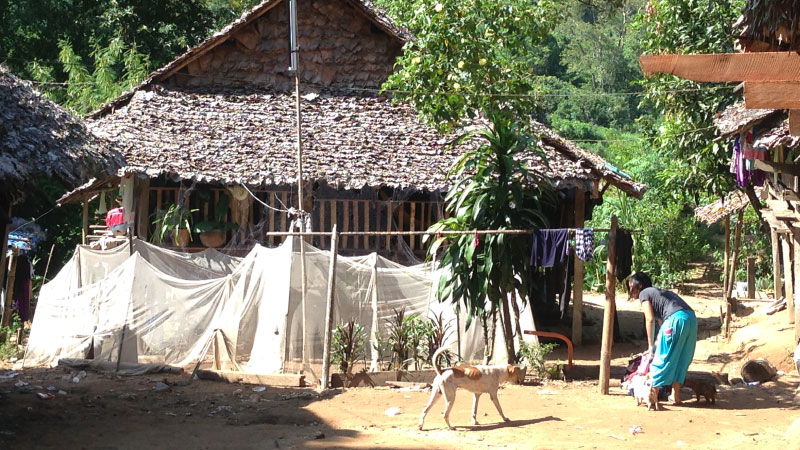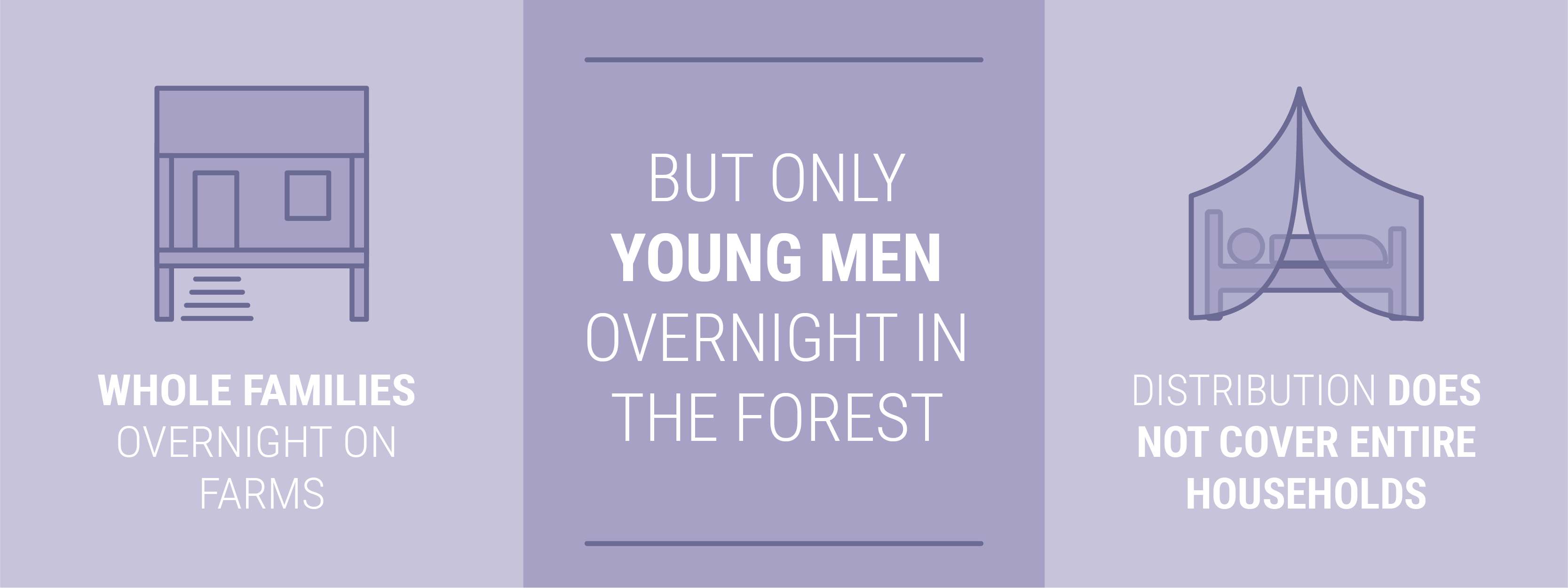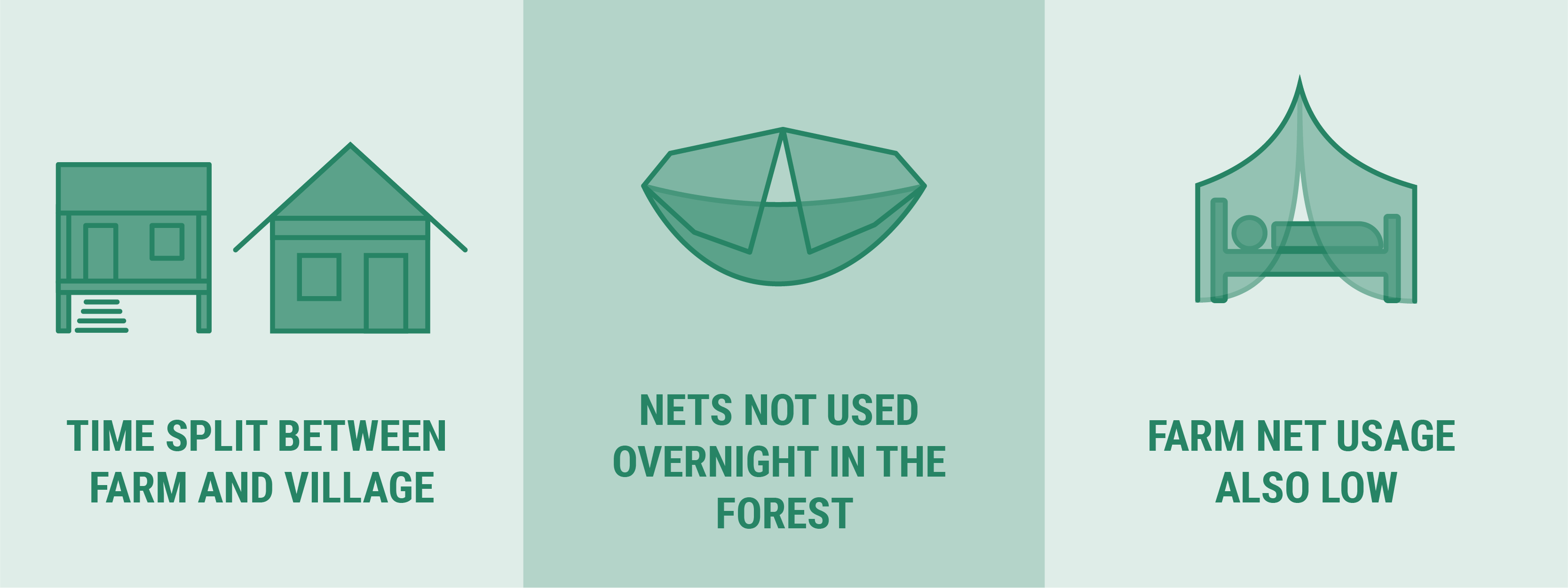Sociological Component

Objective
To find out more about villagers’ patterns of movement and their behavioural practices, interviews and focus group discussions with risk groups and direct observations were conducted. Risk groups – the forest-goers and mobile groups – were given GPS tracking devices to monitor their movements and identify likely transmission spots.
Methodology
In both countries, forest-goers and other mobile groups were tracked using GPS-enabled tracking devices. Direct observation of villager behaviour was conducted concurrent to the mosquito collection times in each study site village. In Thailand, a total of 72 households were sampled. In Viet Nam, the collection teams visited 35 households in July, 35 in October, and 40 in December. Observational data was then compared against mosquito collection data in order to identify the time points of exposure to potentially infective mosquito bites and the behaviours that could lead to exposure.
Key informant interviews and focus group discussions were conducted in September 2016 in Thailand and October 2016 in Viet Nam. Eight focus group discussions and seven in-depth interviews were undertaken in Thailand. Three focus group discussions and 28 key informant interviews were undertaken in Viet Nam.
Key findings: Thailand
The communities’ practised subsistence farming; men, women and whole families could stay in the fields overnight in farm huts, particularly during certain times of the year when the workload on the farms was high.
There was regular border crossing to and from Myanmar.
Although men and women foraged in the forest, only men stayed overnight there. Repellent was used, but not nets.
Nets were only used on the farms if the household had extra nets to take to the farm huts.
The nets that were distributed for free were not large enough to accommodate the traditional sleeping arrangements in these households.
People sought healthcare when they had a fever. If people got sick on their farms on the Myanmar side of the border, they would travel back to Thailand for treatment.
Community members perceived malaria as low risk; mosquitoes were seen as less of a nuisance than they were in the past.

Key findings: Viet Nam
Most community members split their time between farm huts and village homes.
When farm huts were farther away or treated as the main residence, it was more likely that the whole family could stay there overnight. Closer farms would allow people to complete shorter trips with fewer household members staying there at one time.
Not everyone used nets in the farm huts.
Although both men and women went to the forest, only men stayed overnight; they did not use nets.
People would rise very early in the morning in the village and farm huts; but in the farm huts people would usually go to sleep very early, at around 7:30pm, as there was no electricity. Sometimes people, particularly males, would stay up later drinking and socialising.
Farm huts are bamboo structures, which could often be very open.
Most people sought healthcare when they had a fever; however, communities simultaneously perceived malaria as a low risk.


